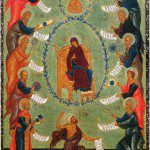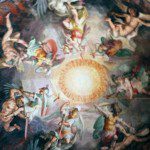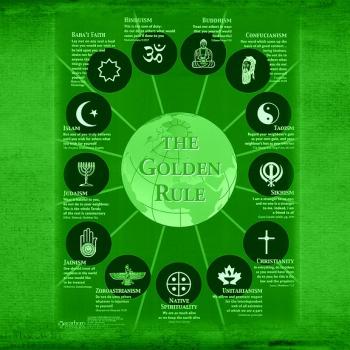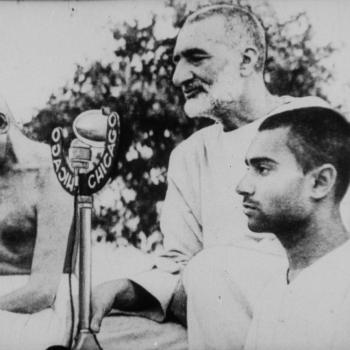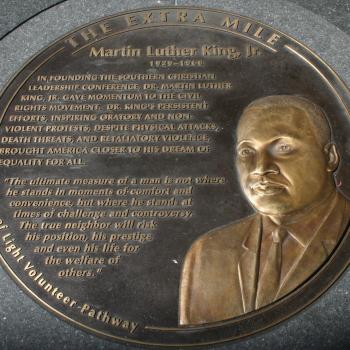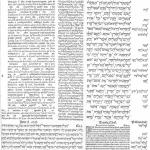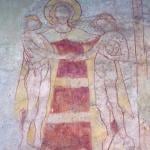4. The Planet of the Spiders
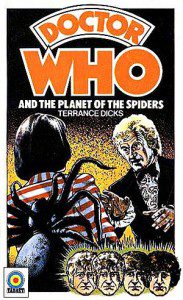
The end of the Third Doctor (Jon Pertwee) brought with it an intriguing Buddhist-influenced story. To be sure, Buddhism is more of a secondary influence to the tale than in other stories such as Kinda and Snakedance, taking as it did the way people in the 60s understood (or misunderstood) Buddhism as a foundation for various plot elements. But, they are there throughout the story, easily noticeable by even the casual viewer, in many not-so subtle forms. But, more importantly for the show, they serve as the foundation as to why Time Lords regenerate, that is, why they change not only their physical form, but also their personality, when other people would ordinarily die. This story grants to the audience an explanation for regeneration, not only by the regeneration of the Doctor, but before his death, that of another Time Lord, a former mentor of the Doctor, K’anpo Rimpoche. Here, he has become an abbot of a monastery in which much of the story takes place. When Rimpoche faces death and regenerates, he has to explain to the Doctor’s companion, Sarah, what happened, and in doing so, the stage is set to explain the Doctor’s regeneration at the end of the story as well.
Regeneration is a kind of reincarnation. The Doctor doesn’t just have a new form, but in a way, he dies, and it is in his death he changes, being given new life in and with a new body and a new personality. This is made very clear in this episode, because the regeneration happens only after the Doctor gives his last breath, only after he can be shown to have died in the conventional sense. While reincarnation is generally seen as the mental formations shifting around and encountering and becoming anew with a new infantile body, creating as it were a new person out of the old, the Time Lords regenerate with maturity and more memory of their past lives, although the changes which take place make it as it were as if the Time Lord truly becomes a new person.
Regeneration being established as a modified form of reincarnation is the significant Buddhist element handed down to the show from this point onward. Previously, what happened with regeneration had not been made clear. The transformation from the First to the Second Doctor was said to be a “renewal,” while the Time Lords were believed to have forced the Second Doctor to change his form to become the Third Doctor. In each instance, the nature of the transformation was not explained and only with this Buddhist inspired story does the theme of multiple incarnations become the normal way to understand Time Lords and their ability to overcome death. It makes sense, therefore, that a story which incorporates an explanation of regeneration through reincarnation would use and apply other Buddhist elements with it to make the explanation fit.
The story itself is long, allowing Jon Pertwee to go out in the style which he desired (high adventure with a lengthy chase sequence), but yet it is also a rather simple story at its heart. The Doctor in a previous story had taken an important blue crystal off the planet Metabolis III, a crystal which could be used to enhance someoene’s mental powers. On the planet Metabolis III, there is a race of “Eight Legs” (Giant Spiders) which have become the dominant form of life, having been enhanced so as to become the powers which rule that work through the powers of those crystals. They have enslaved a group of humans to do their will, while on the other hand, worshiping the greatest of them, the Great Old One, who is also seeking to fulfill what it believes is its destiny by establishing itself in an ultimate form that can only come about if it uses all the major crystals of the planet to its advantage. And so the crystal the Doctor took with him is being sought out by the spiders. Finding it on earth, they reach out to those involved with Buddhist meditation at the monastery Rimpoche is abbot, promising power to those who would work with them to find the crystal. The Doctor has to find a way to stop them while saving those humans enslaved by the spiders, as well as stop their power-mad allies before it is too late. In the end, he is able to save the day but at a loss of his own life.
Taking place at a Buddhist retreat, popular elements of Buddhism (and meditation) are employed, from the chanting of “Om,” to the adaptation of mandalas as a way to engage meditation. The Buddhist elements are not exactly established in a form which properly portrays Buddhism, but for those who are not so familiar with the religion, it is more than suggestive of Buddhist beliefs and practices that it is able to serve as a vehicle for reflection on Buddhism and Buddhism themes.
http://www.youtube.com/watch?v=8VvZ-VaeB5gThe power of the mind, especially the mind properly developed in meditation, the notion of the mind being able to project multiple incarnations at once, and the way meditation is a way to find peace, all finds their place in the story. The Buddhist element is impossible to ignore, giving Buddhism a veneer of respectability while also warning the average viewer of the problems which can follow meditation embraced with the wrong mentality. But it is really the way the episode explains regeneration through an adaptation of the notion of reincarnation, giving a lasting influence on Doctor Who, that makes this one of the most important religious-oriented stories in the series.


